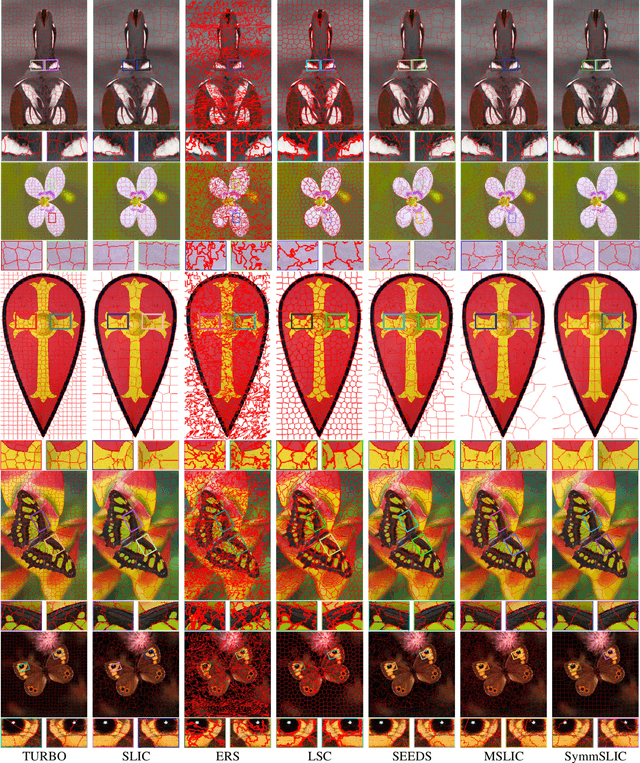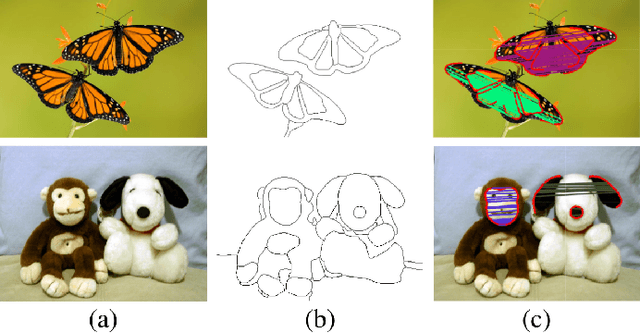SymmSLIC: Symmetry Aware Superpixel Segmentation and its Applications
Paper and Code
Aug 10, 2018



Over-segmentation of an image into superpixels has become a useful tool for solving various problems in image processing and computer vision. Reflection symmetry is quite prevalent in both natural and man-made objects and is an essential cue in understanding and grouping the objects in natural scenes. Existing algorithms for estimating superpixels do not preserve the reflection symmetry of an object which leads to different sizes and shapes of superpixels across the symmetry axis. In this work, we propose an algorithm to over-segment an image through the propagation of reflection symmetry evident at the pixel level to superpixel boundaries. In order to achieve this goal, we first find the reflection symmetry in the image and represent it by a set of pairs of pixels which are mirror reflections of each other. We partition the image into superpixels while preserving this reflection symmetry through an iterative algorithm. We compare the proposed method with state-of-the-art superpixel generation methods and show the effectiveness in preserving the size and shape of superpixel boundaries across the reflection symmetry axes. We also present two applications, symmetry axes detection and unsupervised symmetric object segmentation, to illustrate the effectiveness of the proposed approach.
 Add to Chrome
Add to Chrome Add to Firefox
Add to Firefox Add to Edge
Add to Edge